(A contribution to the Underrated Blog-a-thon at Chicago Ex-Patriate. How underrated? Few critics liked it, and virtually nobody saw it. And Dil still has a penis.)
In Dreams
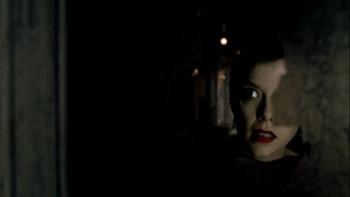 She dreams of them. She fills her computer screen with digital drawings of them. One is left on a swing at her house. Snow White is poisoned by one in her daughter’s play just before the abduction. In her kitchen are dozens of them that she chucks into the kitchen sink, which then explodes with brown muck. She cannot escape them, but she also surrounds herself with them.
She dreams of them. She fills her computer screen with digital drawings of them. One is left on a swing at her house. Snow White is poisoned by one in her daughter’s play just before the abduction. In her kitchen are dozens of them that she chucks into the kitchen sink, which then explodes with brown muck. She cannot escape them, but she also surrounds herself with them.
Claire is torturing herself with the fucking apples.
Overripe and finally fetid, Neil Jordan’s In Dreams goes very, very wrong as a thriller in its final act (and even wronger in its epilogue), but if you fall asleep the first time you see Robert Downey Jr.’s face, you might think you’ve seen something weirdly special.
Actually, it is pretty special, but you need to dive below the silly surface.
Jordan’s movie (which he directed and co-wrote) is at its core a baroque and gothic collection of symbols and pregnant images and fears and clichés and pop psychology woven together into a garish quilt. The pieces are familiar, lending it a worn look, but its patchwork nature also means that it’s open to interpretation depending on the angle from which you approach it. I see it as a study of dark urges, guilt, and psychological projection.
Claire (Annette Bening), an illustrator whose credits include an edition of the tales of the Brothers Grimm, dreams of things – mostly bad things. When she tells her airline-pilot husband Paul (an impossibly handsome Aidan Quinn) of a dream she can’t shake, he whiningly inquires whether this is like the one about her mother. She’s certain that her dream is telling her that the latest child abducted by a serial killer is still alive. She’s wrong, and learns that she was foreseeing her own daughter’s disappearance and murder.
Her grief isn’t belabored, and in a sequence from the discovery of a body to Claire’s (first) attempted suicide, Jordan’s compact storytelling is impressive. He trusts his actors, and lets them through facial expressions reveal what has happened and break your heart.
There’s a showier but similarly bravura sequence later, when Claire is trying to explain her psychic situation – that the serial killer is inside her head, and she’s inside his – to her mental-health professional (Stephen Rea, in a distracting accent). Giggling, anxious, and fully understanding how ridiculous she sounds, Claire seems to desperately want to connect but knows that it’s impossible to communicate with somebody who thinks you’re nuts. And at that moment, even Claire isn’t sure about her sanity.
Bening is the movie’s anchor, and it needs one. Downey – a late arrival as the serial killer Vivian – tries to devour the movie and ends up outclassed by the actor playing his character’s younger self (Geoff Wigdor). But I doubt seriously that any performer could have turned the dysfunctional-family-dress-up of the climax into something narratively or psychologically credible. The conception of the adult Vivian is facile and tired and cheap, and no amount of Downey’s androgynous mincing can erase it.
The larger problem is that while the coming together of Claire and Vivian is necessary and inevitable plot-wise, there’s no interesting place for it to go in terms of suspense. Vivian was far more compelling when merely hinted at, and Downey never seems dangerous. His best moment is comedy, when Claire tells him that he can’t kill her yet because she’s supposed to die in the water, and the argument wins him over instantly.
But In Dreams isn’t about the story, and the title itself is a heavy hint that the symbols and visuals are far more important than plot. Pulling from myths and folk tales – the children’s production of “Snow White” is not merely a plot setup – Jordan mixes motifs and images drawn (or seemingly drawn) from the oral tradition: the apples, the color red, the submerged city, the cruelly abandoned child, and a woman’s shoe, to cite just a few examples.
Jordan’s interest in the dark folk tale was self-evident in The Company of Wolves, and the “fairy tales” collected and polished by the Grimms survive because they express something primal and universal. Here, Claire suffers through the death of her child and the infidelity of a husband – the fears of every parent and every spouse. Her life has become a nightmare whether she’s sleeping or not.
Yet I think the efficiency with which Jordan dispenses with Claire’s grief is telling; he doesn’t really care about it.
What he seems to care about is sexual confusion (there’s even a bit of a Crying Game joke), identity confusion, abandonment, and responsibility. Vivian was left by his mother to drown, and Paul’s departure from the play facilitated his daughter’s abduction. (He only returns when she’s dead, and it’s hard not to hear the nursery-rhyme refrain of “My daddy was a dollar / Not worth a hundred cents” as an indictment of the absentee parent.) Paul strays from Claire, but he blames her, just as Vivian appears through his carvings to blame his father rather than his mother. And although Paul plays the part of the dutiful husband during Claire’s convalescence, he also acts burdened and entitled. (Claire bites his lip and claims it was somebody else, but it’s reasonable to view her violence as self-defense against a rapist.)
These are just a few examples of the density and complexity of the movie, and bluntly, I’m not sure what a coherent analysis of the movie’s themes and symbols would look like.
But there’s a common thread of misplaced blame, and that suggests an argument that Claire is more than a victim. When they’re falling through the air, Vivian and Claire are intertwined and virtually indistinguishable – a visual representation of their psychic bond, yes, but also a hint that they’re inseparable. Why do you think Vivian kills Paul, and leaves the dog there to eat him? Vivian to this point has mostly shown an interest in little girls, after all. And the only one Paul has wronged has been his wife.
By that logic, of course, Claire bears some direct responsibility for her daughter’s murder.
I won’t go so far as to say that Vivian doesn’t exist – an assertion the movie explicitly rejects – or that Claire literally commits filicide, even though her daughter is a rival for Paul’s affections at a time when he’s admitted being less than faithful.
But I will close by reminding you that the movie’s first act includes that theatrical production in which a stepmother orders the murder of her husband’s beautiful daughter.
And in which the dark queen looks in a magic mirror and communicates with a luminous fairy dressed in white.

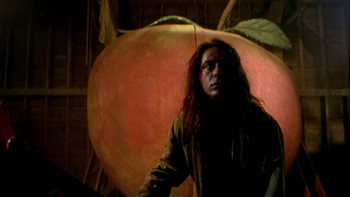
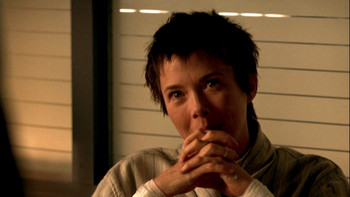
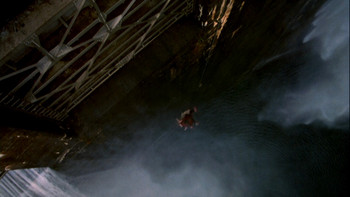
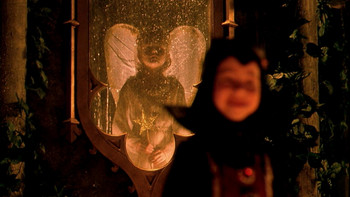
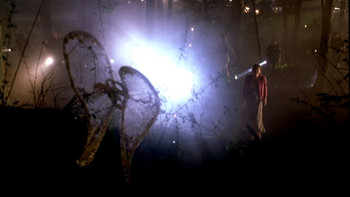
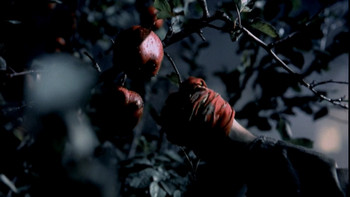
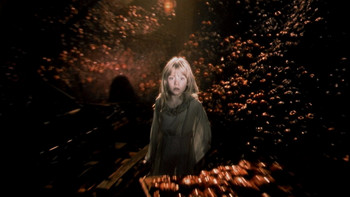
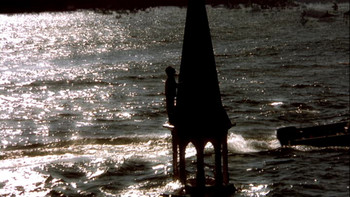

Hm, I’ve always found Aidan Quinn hideously ugly. Kidding.
There’s so much on the table here, it’s hard to pick a starting point, and that’s a good thing. I enjoy the fact that you picked an underrated movie that you enjoyed, yet still pointed out some of the inherent faults.
I haven’t seen this film yet, but it’s going in my Netflix queue immediately. It seems like it might require multiple viewings, since you mentioned so many layers to the story.
thank you thank you thank you. this movie is in my top ten.
bening is one of my favorite actresses and i really loved this movie. the dreams she had , you almost knew they were going to meet, there was the hope that she would survive and when she didnt it was a tad of a let down until you found out she gets her chance for revenge…vivian in turn gets what he deserves! as for aidian quinn i am not a fan and robert downey it was a short part but he delivered as well as can be expected. bening in my opinion stole the show and deserves all the kudos! 🙂
I love this movie. Although I too have very vivid dreams;
I was taken to see this movie with that person thinking it would help clear me up or prove I’m a bit of a nut-case. It did both! Gee thanks. Ugh. I found it interesting that his name is Vivian…..close to vivid. I think people should see this movie for ALL the messages, as unpleasant as they might be. The abuse can make you have all sorts of nightmares, then the death of a child makes you completely insane for years with self blame, etc. This movie was actually good therapy, but now I sound nutty. Yet it helped me to come to grips with reality.
BTW I don’t like red apples anymore. For the first time I saw that it comes from a book called Doll Eyes; interesting, what does the author draw from. Going to read it someday.
Forgot to mention that this review is so insightful and brilliant; really made me take a new look be at it. Although for me it was more of a reality, abuse from childhood into adulthood and death of a child…hmmmm. my nightmares ended up being about the person I had the child with. Subconscious is a miraculous thing. Of course I left and never looked back. Sorry to be so heavy! Yet that’s life